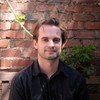Illustrations by the author.
Advertisement
Richard Bassed: Everyone usually has a dental record, so your teeth are used a lot. Teeth identify half to two-thirds of the bodies in any mass fatality. They're good because they're durable—it takes a lot to destroy them. A body can be burnt to almost nothing, but the teeth will last. DNA is used too, of course, but it's generally more expensive and can take longer. Finally we use medical records: If you have a pacemaker or titanium hip, all those have serial numbers we can identify you with. Beyond that we have circumstantial property, things like the clothes you're wearing or what's in your wallet. But those are used as a last resort because they don't ensure identity.
It was the 2002 Bali bombings. Eighty-six Australians died that day, out of 202 people in total. I'd been working as a forensic dentist in mortuaries so I was used to the dead. But in a disaster such as that, the feeling is very different—the level of adrenaline and emotions are running so high.
Advertisement
Absolutely. The bush fires were terrible. It was so close to home. When we visited, we could see where families had tried to hide themselves. We'd heard the reports of people calling 0-0-0, and the operators could hear flames in the background. Everyone fears being burnt to death, it's horrendous. That was probably the most challenging.With the tsunami, a lot of the bodies had already been recovered in some form before we arrived. Some had washed away and been found in the ocean, or up trees and all over the place. So there wasn't that real emotional connection to the way in which the people had died.
The first, and most obvious, is the condition of the bodies. In disasters like plane crashes, fires, and explosions the bodies are severely fragmented and the parts can be mingled. It can be very difficult to separate individuals at times. In terms of teeth—which is my forte—sometimes different countries have varying ways of cataloging the shapes and structures of various fillings and teeth. That can create problems.In the event of criminal disaster—such as MH17 plane crash in the Ukraine— identifying bodies can become a very difficult task. By the time the rebels allowed DVI experts in, many of the bodies had decomposed badly, and some had been thrown on trains and taken to the other side of the country. Many bodies weren't recovered. The plane exploded in the air too, so many bodies were spread out over kilometers.Is it ever impossible to identify someone?
It depends on the scale of some disasters. Take the tsunami in Thailand—there were 5,000 deceased, and the DVI operation lasted an entire year. And at the end, there were still around 400 bodies that weren't identified. So when you think about the earthquake in Haiti, where 200,000 people were killed, it would take something like 40 years to identify the dead. There just isn't enough forensic DVI expertise in the world to do certain jobs quickly.Do you ever feel emotionally overwhelmed by your work?
I guess it must affect you eventually. I haven't had an emotional breakdown, but when you come home from these sorts of things there is a sense of emptiness. It's hard to go about your normal day-to-day work after an operation. It's a bit like, what do I do now?Follow Jack on Twitter.
